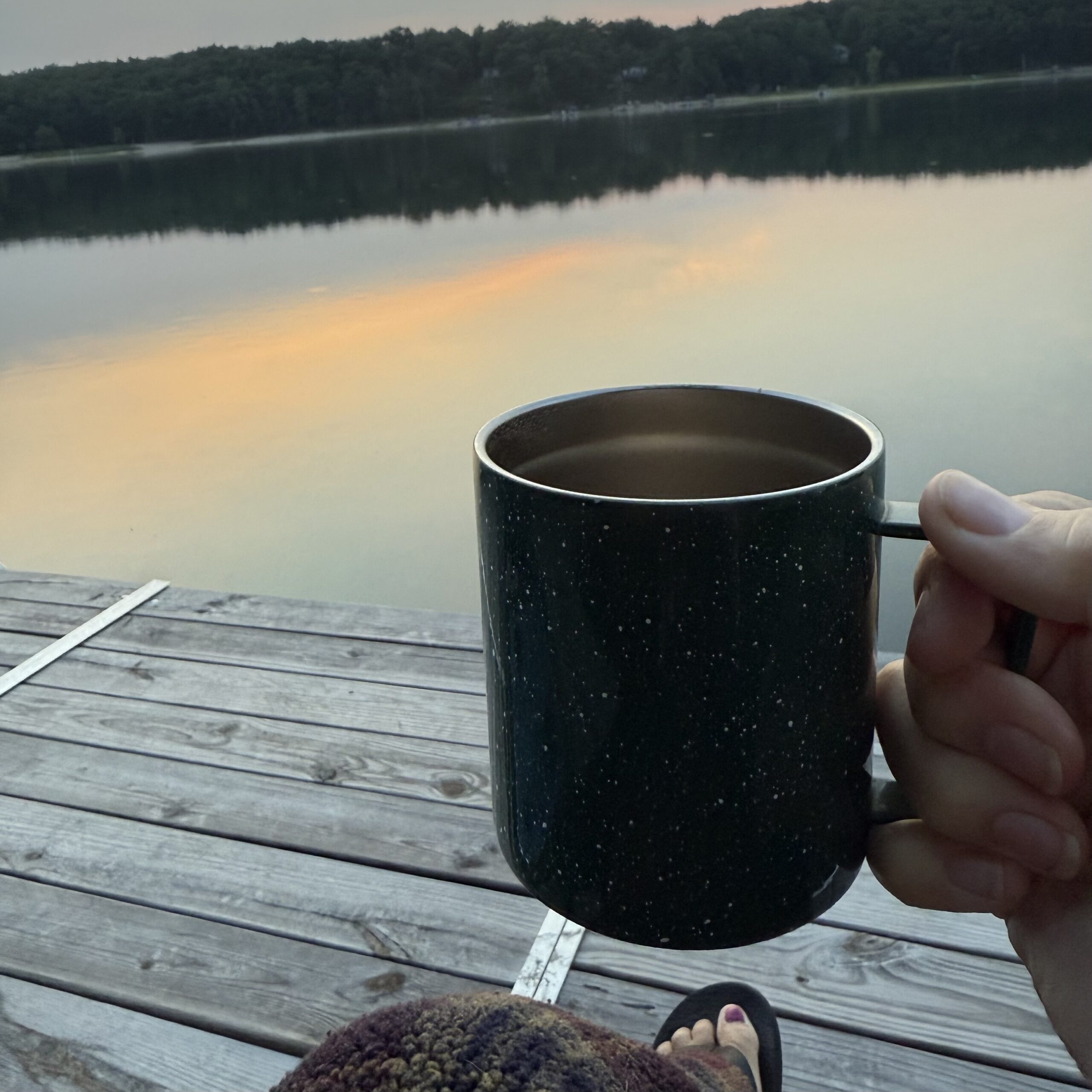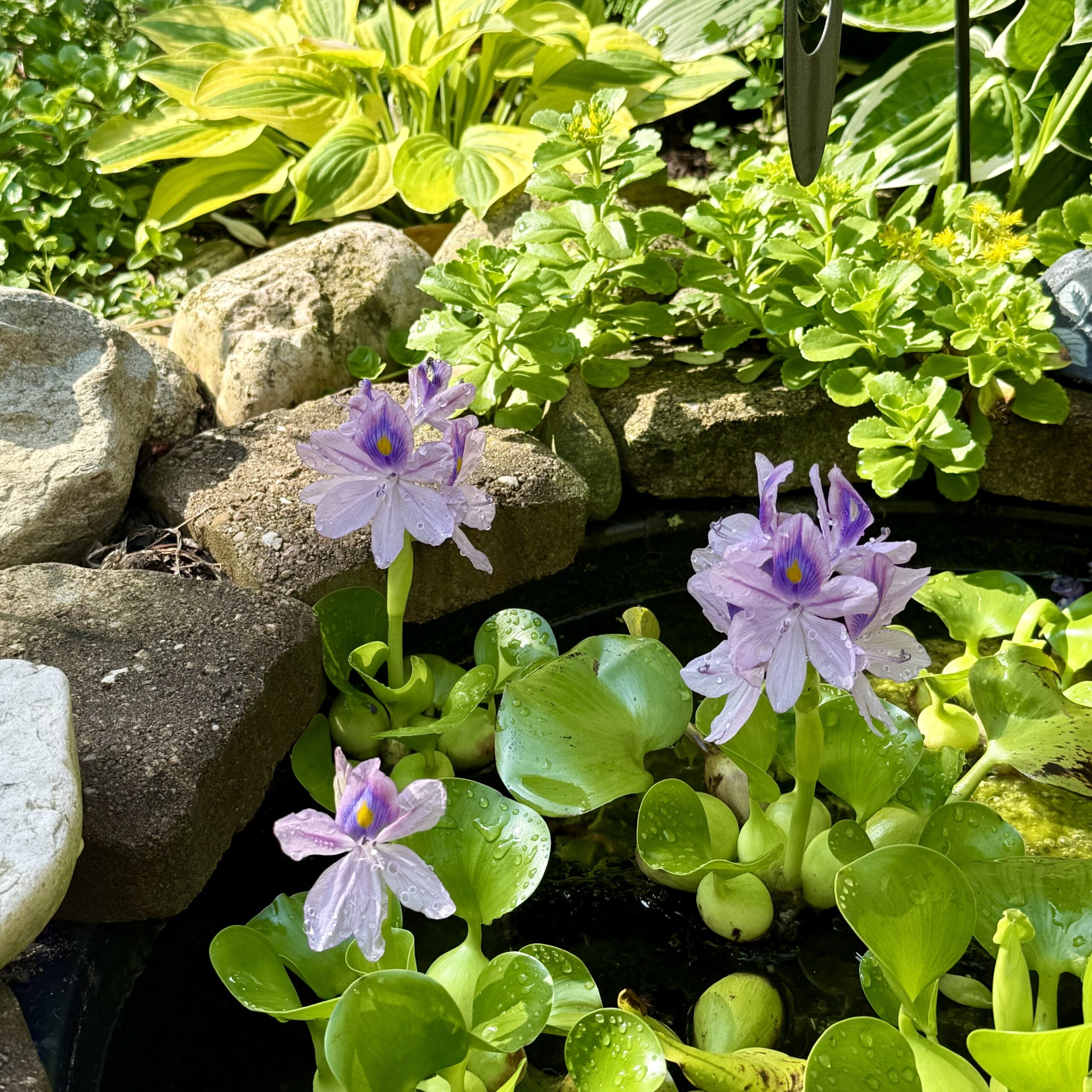Welcome to the . . .

For a limited time (THIS MONTH ONLY!), the Museum of Me is . . . a Science Museum.
C’mon along. Prepare to be . . . BLINDED BY SCIENCE!
As a student, I was fascinated by science and really enjoyed my classes — especially when we got to do actual experiments. (I struggled, though, and decided Science Was Not For Me After All when science met up with advanced math. Oops. Count. Me. Out.) Still. I learned a lot over those school years – and most of the general concepts have stuck with me over. Y’know. Things like . . . Gravity. Water displacement. Plant cells. Horse power. Erosion. The Krebs cycle.
But you know what my favorite science concept was? Paper chromatography! I did an experiment in my (probably 5th grade) science class . . . where we put a drop of ink on a strip of chromatography paper, dipped it into a tiny bit of water, and watched colors from the ink travel up the paper. It was magical!
So magical, in fact, that I have remembered it to this day.
So magical, in fact, that I decided to try to recreate that experiment for the Museum of Me!

(Go ahead. Try this at home!)
As I watched this experiment unfold in front of me, I wondered how I could explain . . . chromatography . . . in any kind of interesting way . . . being rather limited in the scientific explanation department and all. Then it hit me . . . I live with a scientist! Maybe I could have HIM do the heavy lifting here in my Museum-of-Me-turned-Science-Museum.
He agreed to a brief interview with me . . . over beer.
So, join me in welcoming Tom* to the Museum of Me.

(Tom, then just a lowly college chemistry major at Boise State University.)
So, Tom. From a science perspective, what is going on here with my ink-blobs-on-paper-towel experiment? I know it’s called chromatography . . . but what is happening?
The ink blots have multiple different chemicals in the mix – think about mixing various colors of ink to make a black mixture. That’s what black ink is. Chromatography does the reverse of mixing – it separates. The different components of the mixture move away from the initial dot at different speeds, you can see the colors separating. What’s happening is that the chemicals that “like” water more than paper move farther, faster. The chemicals that “like” paper more than water stay closer to the original dot. What you see is the separation of the components by virtue of the individual chemical characteristics, in this case revealed by the different colors.
Is this concept (chromatography) actually useful to you as a scientist in the lab?
Chromatography is hugely useful in the lab and is done on a daily basis in areas like organic synthesis, analytical testing, and pharmaceuticals. Synthetic chemists use it to purify mixtures by separating components, and to optimize processes to synthesize (build) molecules. Analytical chemists use chromatography to identify and measure individual chemicals in mixtures. Particularly in pharmaceuticals where purity of drugs as well as the impurity profile (individual impurities) is very important (safety and efficacy), chromatography is the industry standard to ensure demanding specifications are met.
I used water and paper towels for my little chromatography experiment. What do you use in the lab (because I’m betting it’s not strips of Bounty and tap water)?
Chromatography works with many things – paper products, even celery (from my own grade school introduction to science). In the lab, highly refined and sometimes sophisticated materials are used. The main one for synthetic chemists is called silica gel, which is just a fancy name for very fine, highly purified sand, a dusty white powder. Silica can be packed into columns or stuck on glass plates – there are many variations. Just like paper, it interacts with the chemicals in a mixture to spread them out based on the properties of each, but in a fairly predictable way.
How widespread is chromatography in the World of Science?
Chromatography is ubiquitous in many areas of chemistry including synthesis (building molecules from simple starting materials), analytical (measuring the amounts of individual components in a mixture), and in pharmaceuticals (ensuring high purity and the exclusion of undesired impurities). Starting in grad school, I used chromatography nearly every day in the lab. It is an extremely common and useful tool.
Do you ever get results that surprise you?
Surprises happen in the lab all the time. In early phases of development this is an expected thing and allows for trial and error as a tool to understand what is happening and how it can be improved. Over time, surprises should become less frequent but they still occur because, well, shit happens. In the pharmaceutical industry, surprises in established drug preparations can be a really big deal, in some cases costing millions of dollars if a batch has to be wasted/destroyed. A lot of effort is put into understanding possible surprises and implementing controls to avoid them. Chromatography is an important tool in those efforts.
Anything else that might be helpful or interesting here?
I guess I find it fascinating that a relatively simple observation in the natural world can, with a lot of ingenuity, refinement, and practice, be converted to such a widespread and valuable tool in the modern scientific world. I never imagined that when I saw that rainbow celery stalk (in grade school). But, like Einstein said, “imagination is more important than information”.

=====

*Tom has a PhD in Organic Chemistry from Colorado State University. After completing post-doctoral studies at the University of Texas at Austin, he spent his career in the pharmaceutical industry. Currently, he leads his own consulting business.
=====
Thanks for visiting the Museum of Me. Watch for new exhibits . . . on the 2nd Friday of each month. If you’re a blogger and you’d like to create a Museum of Me along with me on your own blog, let me know. I’ll send you our “exhibit schedule” (a list of monthly prompts) and we can tell our stories together.






If Tom ever gets tired of pharm consulting, he might consider teaching! I’m sure he taught along the way in grad. school and consulting is a bit like teaching, but I think he explains things well. Plus, he has that “serious professor” expression down pat as he considers his molecular model. Thanks for taking us to your Science Museum of Me and showing us that science can be done with Bounty and water!
Wow. I never gleaned that much information over a glass of beer. Guess I was talking to the wrong person. Tom is very articulate. And insightful as well as informative. You picked good! (But we already knew that!)
Very interesting! My Dad also had his PhD in chemistry (MIT) so many a dinner table conversation revolved around experiments and discoveries. And, all my siblings were/are scientists – chemistry and aerospace. I still have some beakers on my kitchen windowsill that have to be over 50 years old!! Fun stuff.
I am in agreement with Bonny… Tom is an amazing teacher! I don’t remember every doing that chromatography experiment in school! I think I might have to try it myself later today! 🙂
I, like you, realized that I would never be a scientist when math hit the scene… sigh. lol
Thank you for these wonderful memories… and thanks Tom for your wonderful explanations!
Thank you to you and Tom for providing an explanation of chromatography in words I can understand! I was not much of a science student (I preferred social studies and English literature) but I remember dying white carnations by putting the stems in colored water.
Okay………………..did anyone not notice that Tom is smiling like a fool while standing next to a glass dome that says EXPLOSIVE????? LOL
It was nice hearing from Tom about science-y stuff. He does explain things good!!!! LOL
While I’m over here just enjoying the pretty colors.
I don’t remember a paper experiment, but we DID do the celery experiment in school. I’d forgotten it, and now I’m itching to dye some celery. (Maybe for St Patrick’s Day?)
It is hugely reassuring to hear a Real Live Scientist say that sometimes, shit just happens! I had no idea that chromatography was something used for real applications and not just fun experiments for kids, so thank you (and Tom!) for teaching me something new today!
And “never did I imagine when I did that celery experiment that my wife would be standing in front of me with paper towel blobs and discussing chromatography”. Thanks for the great science lesson Kym and Tom – cheers!
I always love Tom’s guest appearances here (please thank him for me!) and this discussion is fascinating. I truly appreciate how he can put these complex ideas into words that make sense even to me! It appears from your experiment that the chemicals that make blue ink like tap water better than Bounty … and now I wonder why that it is!